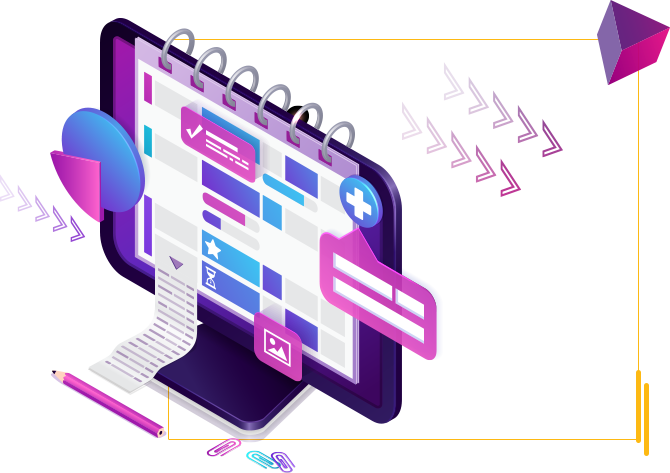
How to Create the Best Shipping App for Shopify in 2024?
Shipping plays a crucial role in making the ecommerce customer experience fruitful. An effective shipping solution can boost conversion rates and brand loyalty. More than 2M businesses have been selling through Shopify, so the need for specialized shipping apps is growing. Shopify is a leading e-commerce platform, constantly innovating to help merchants establish and scale successful online stores.
However, out-of-the-box functionality is sometimes limited. This is where third-party apps become invaluable, extending native Shopify features. The overall purpose of this blog post is to guide the development of the best shipping app for Shopify. An app that seamlessly integrates major carriers offers flexible shipping options to fit diverse customer needs and provides buyers with transparency and control over their deliveries, which can significantly improve the shopping experience.
Building the Best Shipping App for Shopify
Shipping is one of the most essential but complicated parts of ecommerce; for online stores powered by Shopify, shipping plugins and apps play a huge role in delivering excellent customer experiences from placing orders to receiving goods. By following these fundamentals, you’ll be well on your way to building the premier shipping app on Shopify.
Who Are We?
We cater to all your business needs from digital
marketing to website development!

Understand Customers’ Shipping Needs
Research Your Target Customer Base
To build the best shipping app for Shopify, thoroughly research your target audience. Analyze customer demographics like location, income, family status, etc. This provides valuable context for Shopify app development services. Identify their most common shipping addresses to focus on major population centers and popular delivery zones. Benchmark the expectations of your target clients.
Consider Common Shipping Preferences
Engage with customers to understand what’s important to them – lowest price or fastest delivery. Ask about preferred carriers, delivery date cut-offs, tracking capabilities, etc. Also, evaluate requests like delivery notifications and Saturday/holiday delivery options. This hands-on market research aids Shopify website development services in crafting optimal solutions.
Identify Pain Points in Existing Shipping
Leverage surveys and community forums to uncover pains with competitors’ shipping. Compile pain areas like unreliable delivery estimates and long transit times with specific carriers. Focusing on such friction points streamlines Shopify’s ecommerce development services.
Competitor Analysis
Analyze competitors’ shipping modules, rates, and features. Evaluate their delivery speed, pricing structure, available carriers, and customization options. This helps benchmark your capabilities as part of Shopify store development services.
Continuous Validation
Revisit customer research periodically since needs change with trends. Track shifting expectations through user testing. Gather qualitative and quantitative metrics every 6-12 months to future-proof your app. This supports ongoing enhancement through Shopify store development services.
Integrate with Major Shipping Carriers
Connect to Core Carriers
Integrate shipping APIs of leading carriers like USPS, UPS, FedEx, and DHL. Shopify needs to provide coverage across regions.
Automate Rate Calculations
Leverage real-time rates and service availability updates from carriers. Build automated rate retrieval into checkout for Shopify websites.
Support Multiple Carriers
Offer flexibility to merchants by integrating the top 3-4 carriers. This caters to diverse Shopify ecommerce development services customer bases.
Generate Shipping Labels
Enable label downloads from within the app using carrier connectivity. Streamline shipping workflows for Shopify stores.
Deliver Tracking Links
Pull tracking numbers from shipments and send consolidated tracking to customers. Assists Magento with Shopify migration and improves after-sales Shopify migration services.
Accommodate Varied Needs
Consider freight forwarding and same-day or international delivery integrations based on merchant profiles. Customize for unique demands.
Regular Updates
Keep pace with API changes, new features, and rates introduced by providers. Maintain competitiveness of the best shipping app for Shopify.
Partner-verified Integrations
Seek approvals to advertise carrier partnerships for authenticity and credibility of integrations.
Offer Flexible and Customizable Shipping Options
Configure Multiple Methods
Allow merchants to set up different shipping profiles based on various criteria like destination, package weight/size, order subtotal, etc. They should be able to define custom profiles with unique names, rate tables, and eligibility rules.
Accommodate Varied Inventory
Integrate flexibility in defining shipping rules and rates for different inventories like books, fragile items, oversized packages, etc. Merchants can add surcharges or set special handling rules for specific SKUs.
Custom Shipping Messages
Give control to fully edit the HTML/CSS of template emails and labels downloaded from the app. Merchants should be able to add their logos, brand colors, and legal/tracking text as needed, as well as support variable fields for personalization.
Region-Wise Features
Based on target geography, enable features like customs declarations, international postage rules, restricted/prohibited items lists, etc. Translators can localize the app interface as well.
Layered Discount Rules
Allow complex discount logic like “free shipping on subtotal $50+” AND “discount $5 on category X”. Support layering discounts and setting expiration timeframes.
Real-Time Sync
Use webhooks/API callbacks to ensure shipping rates on checkout always reflect the latest published prices from carriers. No manual updates are required.
Sandbox Testing
Provide a separate testing environment for merchants to review changes without affecting the live store. Before deployment, they can validate new rate tables, email templates, etc.
User Documentation
Include detailed help pages and tutorial videos within the app. Focus on a simplified yet comprehensive shipping configuration experience.
Grow Human-Centered
Businesses
Online
Web App Vault is a custom web design and business
website development company that enhances the visibility
and credibility of businesses. We are an approachable
eCommerce service provider that fuels digital marketing.
We Are Here To Help
Enable Convenient Checkout Experience’ Section
Pre-populate Rates
Call carriers’ real-time shipping API on cart/checkout to auto-fill options for each address without manual input.
Optimal Defaults
Analyze customer data to select the fastest/lowest cost method based on location, order size, etc. Defaults encourage effortless purchasing.
Flexible Selection
Provide multiple opportunities for shoppers to adjust shipping methods and addresses until final payment submission in case of any changes.
Address Autocomplete
Integrate databases like Google Maps to recognize inputs and propose address matches while the customer types require less effort.
Centralized Tracking
On the dashboard, consolidate order tracking links from across carriers in one place for seamless tracking of all shipments for any order year-on-year.
Multistep Checkout
Break up checkout into logical steps like Address > Shipping > Payment > Confirmation. Track progress to avoid cart abandonment.
Validation Checks
Before payment, verify that the entered shipping and billing addresses match any configured rules. Warn if methods are unavailable to avoid later disputes.
Customization Options
Allow messaging like gift notes to be added to each shipped item. Personalized touches aid customer experience and relationships.
Web App Vault – Your
Industry-Specific
Data Guardian
Our industry-specific web application solution
provides robust data security and a seamless user
experience tailored to your industry’s requirements.
Safeguard your sensitive data with assurance.

Providing Animation Services To
Clients In Multiple Cities Across USA & Canada
- Arlington
- Cleveland
- Jacksonville
- Miami
- Orlando
- Atlanta
- Dallas
- Louisville
- Minneapolis
- Philadelphia
- Austin
- Denver
- Kansas City
- New York
- Portland
- Chicago
- Houston
- Los Angeles
- New Orleans
- San Diego
Provide Excellent Customer Support Section
Multi-channel Support
Offer 24/7 assistance via phone, email, and live chat within the app. Integrate chat tools that don’t require separate software.
Easy Tracking Access
Add one-click order tracking links on the order page and confirmation emails for seamless package visibility without support intervention.
Personalized Alerts
Allow granular delivery notification rules, e.g., notify rescheduled deliveries only. Leverage carrier APIs to keep customers informed proactively.
Self-help Center
Maintain a comprehensive, searchable knowledge base addressing common issues with guided troubleshooting—category-wise articles.
Prioritized Routing
Leverage the ticketing system to route more complex issues to senior agents faster or pass it to concerned teams like developers/carriers.
Comprehensive Training
Monthly product/process training for agents covering app updates and carrier changes through video tutorials, documentation & mock demos.
Customizable Policies
Let merchants configure support operating hours and preferred channels based on their business model and customer availability.
Feedback Loops
Track resolution quality through surveys and randomly auditing agents. Reinforce learning through praise/retraining to enhance support standards.
Community Engagement
Resolve issues respectfully and follow up on user experience. Turn minor complaints into central brand advocacy over time.
Frequently Asked Questions
How do I integrate major shipping carriers into my Shopify shipping app?
You must integrate the shipping APIs of carriers like USPS, UPS, and FedEx to retrieve real-time rates and labels. Test the integrations thoroughly before going live.
What options should the app provide for customizing shipping rates and methods?
Allow setting different rules by zone, weight, item types, etc. Merchants should be able to customize labels and messages and offer discounts per their needs.
How can my shipping app improve the checkout experience?
Pre-fill rates, auto-populate addresses, consolidate tracking, ensure flexibility, and validate orders to avoid issues. A seamless checkout boosts sales.
How do I understand customer needs for my shipping app?
Conduct in-depth research on your target audience and competitors. Get customer feedback through surveys to focus your development accordingly.
How do I test my shipping app before release?
Thoroughly test all features, workflows, and edge cases in a sandbox. Also, conduct usability tests and fix issues before launch. This will ensure a smooth experience for merchants.
Conclusion
Developing the best shipping app for Shopify requires a deep understanding of business and customer needs through extensive research. It is crucial to integrate closely with major carriers, provide flexible yet intuitive configuration options tailored to diverse store types, and ensure seamless user experiences from checkout to support. Thorough testing and continuous improvements are needed to stay ahead of market changes.
If you want to develop the next best shipping app for the Shopify store, get started by researching popular features, testing available APIs, and gathering customer feedback. At Web App Vault, we can help you seize the opportunity to power shipping for thousands of Shopify stores worldwide!
